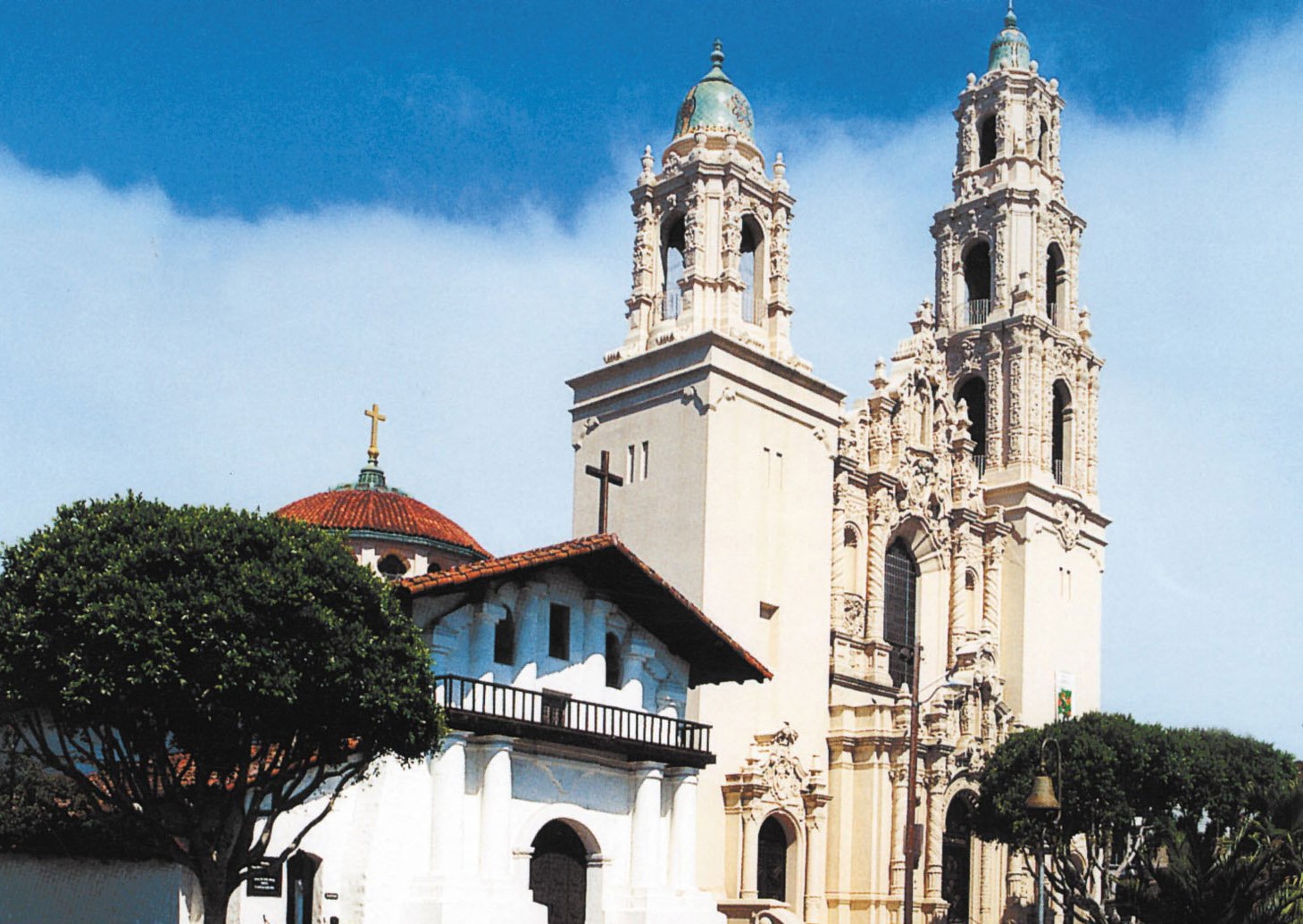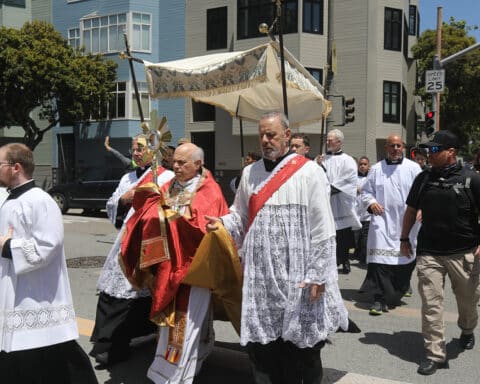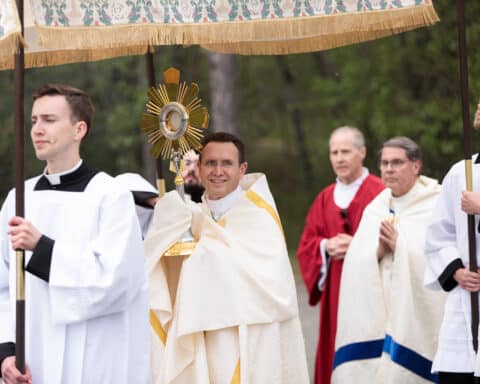(OSV News) — Mountains, valleys and plains mark the National Eucharistic Pilgrimage’s St. Junipero Serra Route, which pilgrims will traverse over the course of eight weeks from California to Indiana.
Beginning on the eve of Pentecost May 18, the Serra Route is one of four National Pilgrimage Routes that will converge in Indianapolis ahead of the July 17-21 National Eucharistic Congress. The pilgrimage and the congress are part of the National Eucharistic Revival, a three-year initiative of the U.S. Conference of Catholic Bishops that launched in 2022.

At about 2,700 miles, the Serra Route is the national pilgrimage’s longest route. It will be traveled by six perpetual pilgrims accompanied by chaplains from the Franciscan Friars of the Renewal. While Catholics may join the pilgrims for legs of their journey, they are especially encouraged to join any of the route’s 150 public events, which include Masses, all-night adoration, confessions, processions (including by boat), speakers, potluck dinners and socializing. The route itself is named for the Franciscan missionary priest St. Junipero Serra, the “apostle of California” who ministered to Indigenous people and Spanish settlers from 1769 to his death in 1784.
The following is a list of selected highlights from the pilgrimage’s western route. Find information organized by diocese for the full Serra Route here.
Mission Dolores Basilica, San Francisco
The Serra Route pilgrimage kicks off May 18 with vespers, Eucharistic adoration and confession at Mission Dolores Basilica, one of 21 California missions founded by St. Junipero Serra and his companions. Constructed by Native Americans from 1782-1791 and used continuously since for religious purposes, the church is the oldest intact building in San Francisco. The following day, Archbishop Salvatore J. Cordileone of San Francisco will celebrate Pentecost Mass at the Cathedral of St. Mary of the Assumption, followed by a Eucharistic procession across the Golden Gate Bridge. On May 20, the perpetual pilgrims will stop for adoration at another mission, Mission San Rafael Arcángel.
Folsom State Prison, Represa, California
Continuing the pilgrimage into the Diocese of Sacramento, the pilgrims will lead a Eucharistic procession May 23 from Folsom State Prison, following a private Mass at the prison celebrated by Sacramento Bishop Jaime Soto, to a Folsom parish for adoration.
O’Farrell’s Cabin, Boise, Idaho
The pilgrimage continues through the dioceses of Reno, Nevada, and Baker, Oregon, into the Diocese of Boise, where, in Boise, the pilgrims will process May 28 from an outdoor event recognizing the area’s parishes to the Cathedral of St. John the Evangelist. On their way, they’ll pass by O’Farrell’s Cabin, the location of the first Catholic Mass in Boise. Erected in 1863, the single-room log cabin was built by Irish-born gold prospector John A. O’Farrell, who also donated land for the first Catholic church in Boise.
Uintah and Ouray Indian Reservation, Fort Duchesne, Utah
The pilgrimage will continue through the Diocese of Salt Lake City with a Eucharistic procession June 4 through the Uintah and Ouray Indian Reservation followed by Mass and a presentation on the Ute tribe’s history.
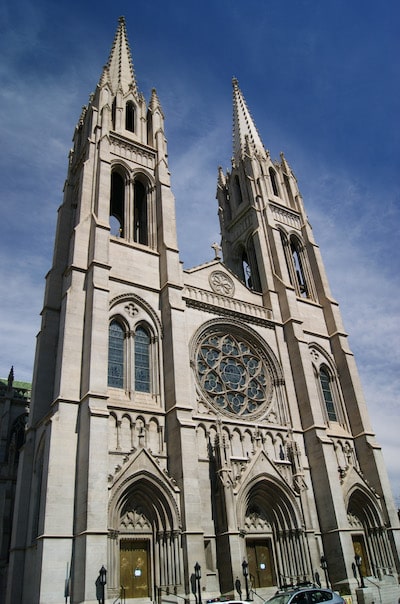
Cathedral of the Immaculate Conception, Denver
From June 5-6, the pilgrims will largely drive through the Rocky Mountains, stopping for adoration in Steamboat Springs, Colorado. In the Denver area, they’ll stop June 7 for the Divine Mercy Chapel at the Augustine Institute, June 8 for Divine Liturgy at Holy Protection of the Mother of God Byzantine Catholic Church, and June 9 the Cathedral Basilica of the Immaculate Conception, where Mass will be followed by a Eucharistic procession through Denver’s downtown.
Holy Family Shrine, Gretna, Nebraska
The pilgrimage continues through the Nebraska dioceses of Grand Island and Lincoln, with stops at both diocese’s cathedrals, into the Archdiocese of Omaha. At the recently established Ignatian retreat center The Cloisters on the Platte, the pilgrims will process five miles June 21 to the historic Holy Family Shrine, known for the distinctive contemporary design of its chapel overlooking the Platte Valley. While in Nebraska, the pilgrims will stop at the Jesuit-run Creighton University in Omaha before crossing into Iowa and the Diocese of Des Moines and then heading south into the Archdiocese of Kansas City, Kansas.
Shrine of St. Rose Philippine Duchesne, St. Charles, Missouri
The pilgrims will spend June 25-26 at Benedictine College in Atchison, Kansas, before heading east into the Diocese of Kansas City-St. Joseph and then the Diocese of Jefferson City, Missouri. They’ll stop July 5 at the Shrine of Our Lady of Sorrows in Rhineland before driving into the Archdiocese of St. Louis, where their first stop will be in St. Charles and the Shrine of St. Rose Philippine Duchesne. Born in 1769, St. Philippine was a French nun who was sent to St. Charles, then part of the Louisiana Territory, as a frontier missionary. She founded the first U.S. convents of Society of the Sacred Heart and accompanying schools and orphanages. While in her 70s, she spent one year at an Indian mission in present-day Kansas. She died in St. Charles in 1852 at age 83 and was canonized in 1988.
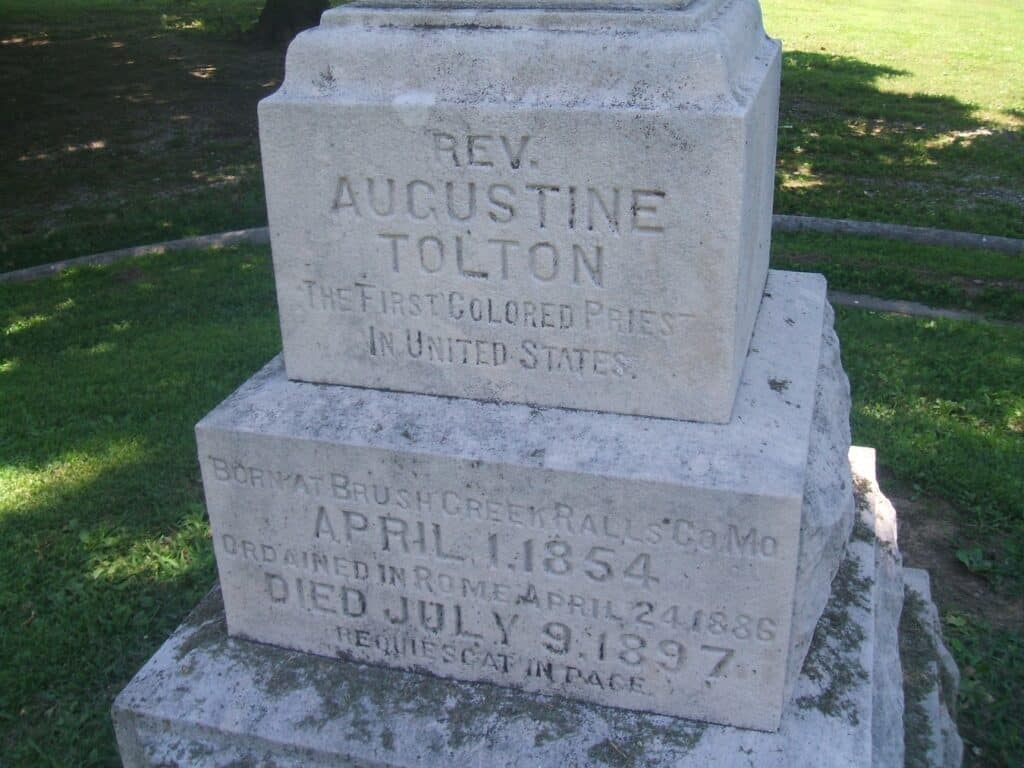
Father Augustus Tolton’s gravesite, Quincy, Illinois
After events in St. Louis, the pilgrims will cross the Mississippi River into Illinois and the Diocese of Belleview, where they’ll attend Mass in Spanish July 7 at the National Shrine of Our Lady of the Snows. Despite its modern design, the shrine commemorates a miraculous snowfall in Rome in 352 that led to the founding of the Basilica of St. Mary Major. After traveling into the Diocese of Springfield, they will process July 9 from the Church of St. Peter in Quincy to the burial site of Father Augustus Tolton (1854-1897), the United States’ first identifiable Black Catholic priest whose cause for canonization is underway. Declared “venerable” by Pope Francis in 2019, Father Tolton began his ministry in Quincy after being ordained in Rome, but went to Chicago 1889 to minister to Black Catholics there. He died in Chicago at age 43. As he desired, his body was brought to Quincy for a requiem Mass at St. Peter and burial. On July 12, the pilgrims will enter the Archdiocese of Indianapolis, with several days in Terre Haute, Indiana, before arriving in the state’s capital July 15.

